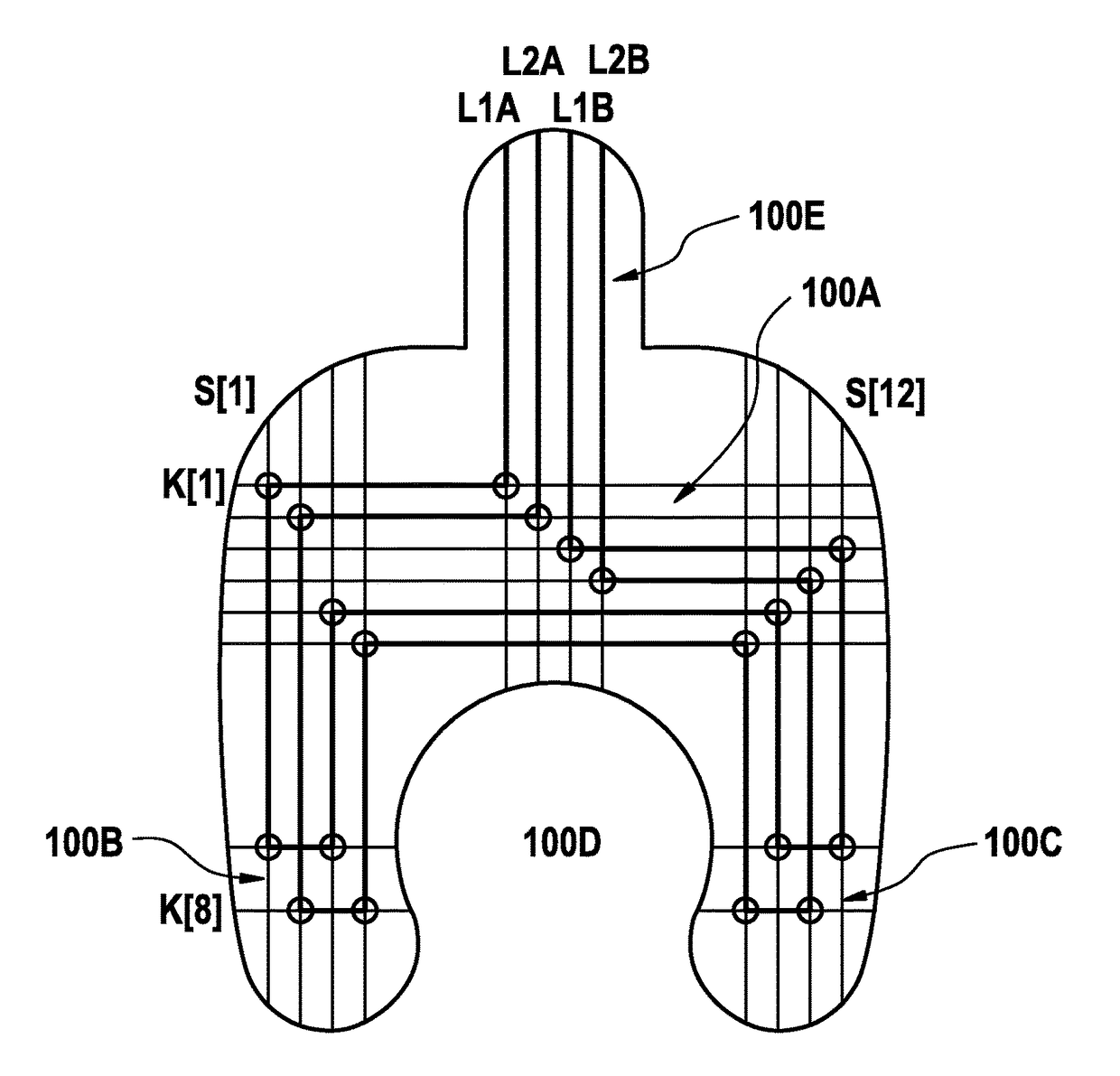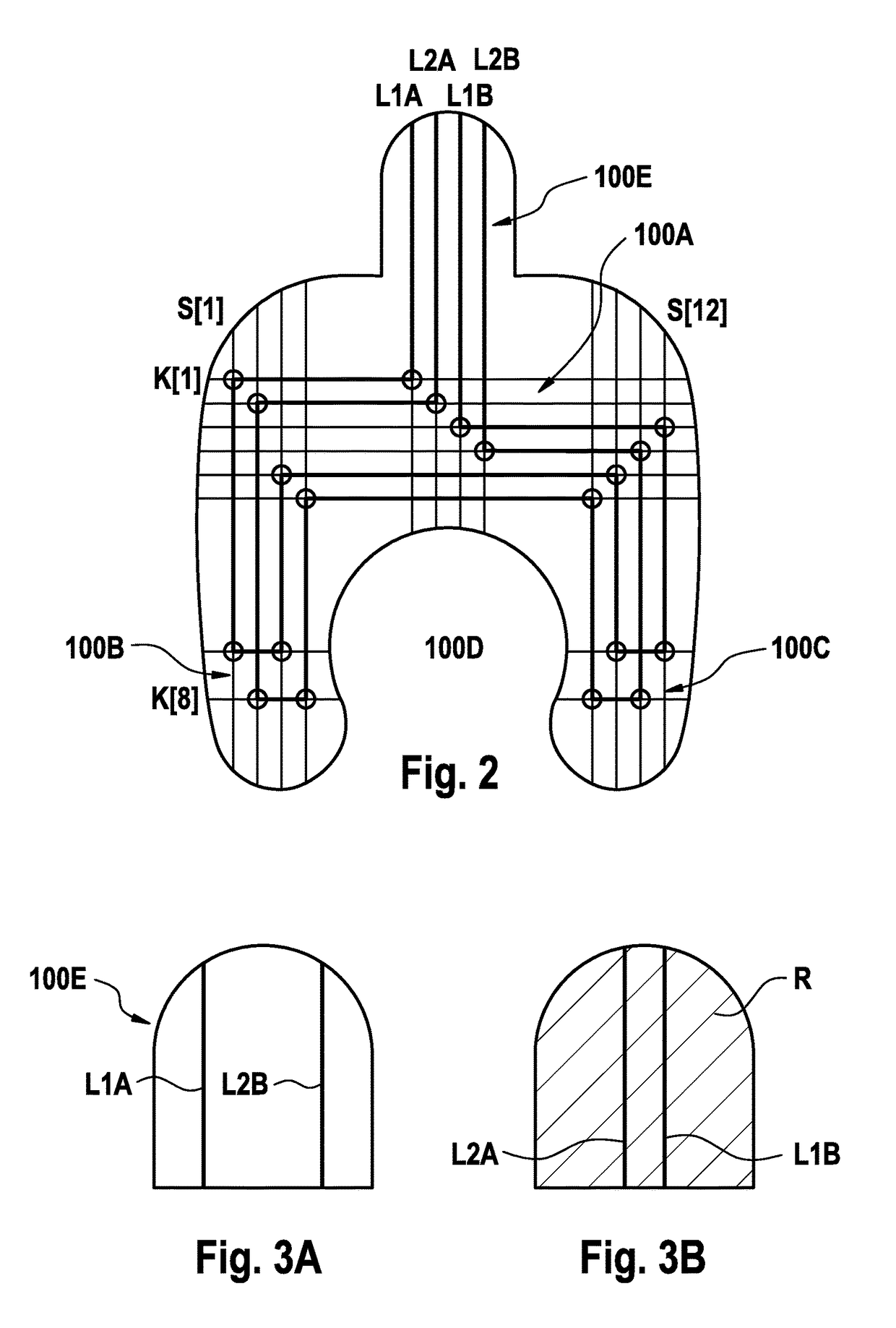Moisture sensor for monitoring an access to a patient and method of producing the moisture sensor
a moisture sensor and patient technology, applied in the field of moisture sensors, can solve the problems of changing the resistance between the conductor paths, the problem of terminating resistors to the substrate material, and the difficulty of connecting up external terminating resistors, etc., and achieve the effect of producing moisture sensors inexpensively in large numbers and inexpensively produced
- Summary
- Abstract
- Description
- Claims
- Application Information
AI Technical Summary
Benefits of technology
Problems solved by technology
Method used
Image
Examples
Embodiment Construction
[0039]FIG. 1 shows the principal components of a blood treatment apparatus, and in particular a haemodialysis apparatus A for acute dialysis, which has an arrangement B for monitoring a vascular access and in particular a vascular access which has a central venous catheter. The monitoring arrangement B is part of the haemodialysis apparatus A in the present exemplary embodiment. The dialysis apparatus will first be described with reference to FIG. 1.
[0040]The haemodialysis apparatus A has a dialyser 1 which is divided into a blood chamber 3 and a dialysis-fluid chamber 4 by a semi-permeable membrane 2. The vascular access to the patient is obtained by means of a central venous catheter 5 which is connected to the patient's neck. The central venous catheter 5 is part of the extra-corporeal blood circuit I, which is merely indicated and which includes the blood chamber 3 of the dialyser 1 and comprises flexible lines 6, 7. A blood pump 8 is provided to pump the blood in the extra-corp...
PUM
| Property | Measurement | Unit |
|---|---|---|
| flexible | aaaaa | aaaaa |
| electrically conductive | aaaaa | aaaaa |
| distance | aaaaa | aaaaa |
Abstract
Description
Claims
Application Information
 Login to View More
Login to View More - R&D
- Intellectual Property
- Life Sciences
- Materials
- Tech Scout
- Unparalleled Data Quality
- Higher Quality Content
- 60% Fewer Hallucinations
Browse by: Latest US Patents, China's latest patents, Technical Efficacy Thesaurus, Application Domain, Technology Topic, Popular Technical Reports.
© 2025 PatSnap. All rights reserved.Legal|Privacy policy|Modern Slavery Act Transparency Statement|Sitemap|About US| Contact US: help@patsnap.com



